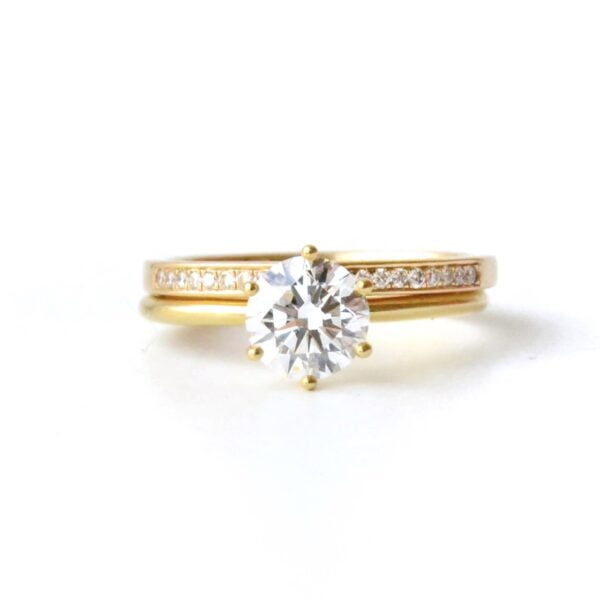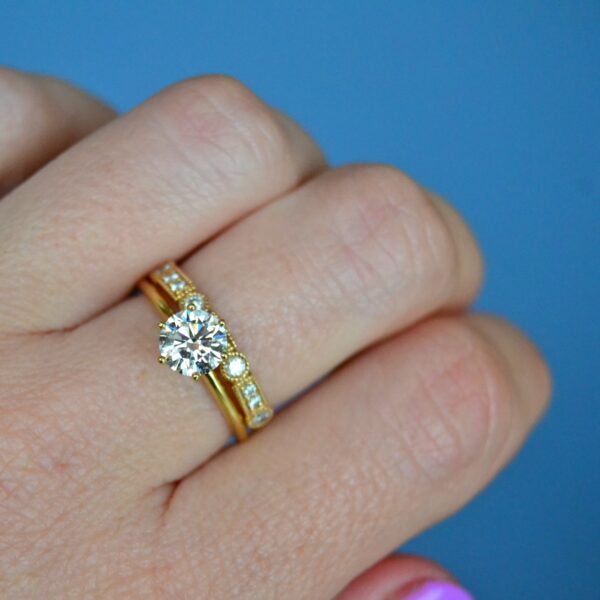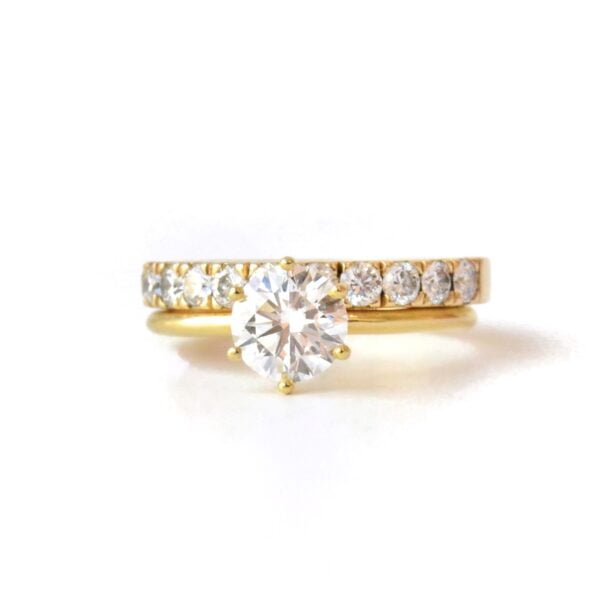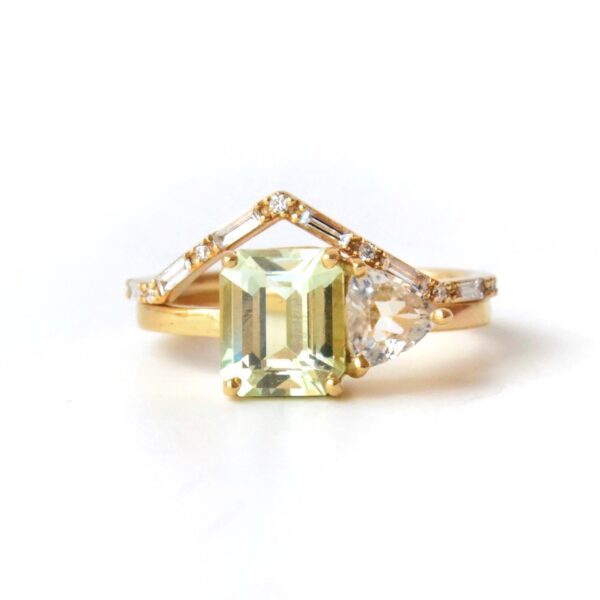No items in the basket.
The Mohs Scale of Hardness
The Mohs Scale is vital for jewellery buyers. Ranging from 1 to 10, it gauges mineral hardness and scratch resistance. It helps assess gem durability, informing purchase decisions. Harder gems resist wear better, making the scale an indispensable tool for choosing jewellery that stands the test of time.
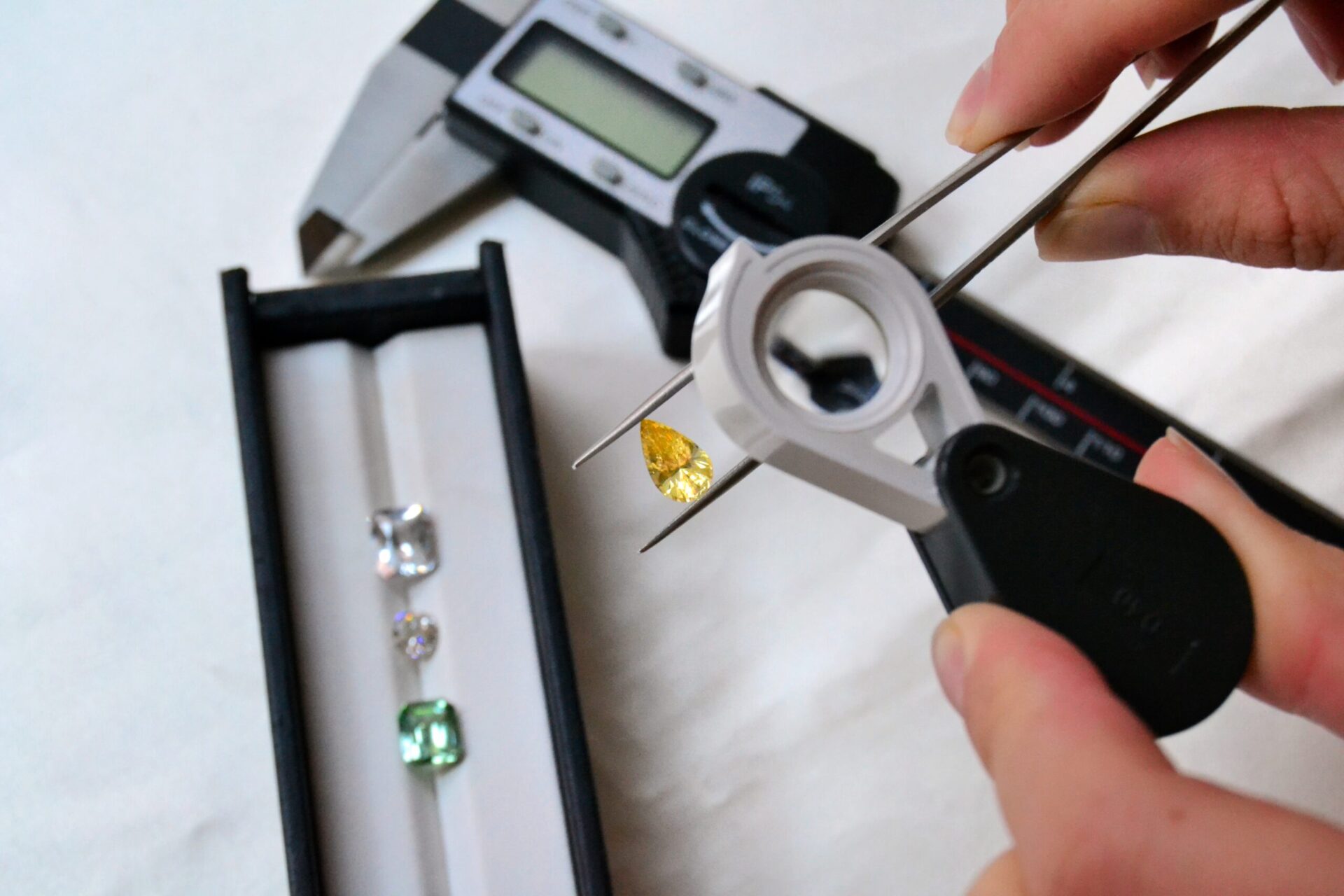
The Mohs scale is a qualitative system used to measure the relative hardness of minerals and materials. It was developed by German mineralogist Friedrich Mohs in 1812. The scale ranks minerals from softest to hardest based on their ability to scratch one another. The scale ranges from 1 (the softest – talc) to 10 (the hardest – diamond).
The Mohs scale is widely used in the gemstone and jewellery industry as well as in geology and mineralogy to determine the hardness of various substances, aiding in the identification and classification of minerals and materials. Jewellers use the Mohs Scale to determine, whether a gemstone will be suitable for everyday wear in jewellery, if the wearer should be extra careful, and whether the gemstone can withstand ultrasonic cleansing, heat etc.
Below we have listed the gemstones we use in our jewellery together with their rank on the Mohs Scale, and what it means:
Diamonds – 10 on the Mohs Scale
Diamonds rank as the hardest mineral on the Mohs Hardness Scale, earning a perfect 10. This means that diamonds are exceptionally resistant to scratching and are the most durable natural material known. Nothing except another diamond can scratch a diamond. Consequently, diamonds can easily scratch and dominate all other minerals on the Mohs Scale, making them an ideal gemstone for jewellery and various industrial applications where hardness and longevity are essential.
Sapphires and rubies – 9 on the Mohs Scale
Sapphires and rubies are positioned at a rating of 9 on the Mohs Hardness Scale, indicating their high level of hardness among gemstones. This translates to remarkable resistance against scratches and abrasions, making them well-suited for enduring daily wear as jewellery. Due to their exquisite colors and impressive hardness, sapphires are highly prized and widely utilized in a variety of jewellery pieces, and they are amongst the most popular stones amongst our customers.
Spinels – 7.5-8 on the Mohs Scale
Spinels are positioned at a ranking of 7.5 to 8 on the Mohs Hardness Scale. This places them in the category of relatively hard gemstones. With a hardness rating of 7.5 to 8, spinels offer good resistance to scratching, making them suitable for various types of jewellery, including rings, necklaces, and bracelets. They are generally more durable than gemstones with lower hardness ratings, providing a measure of resilience against everyday wear and tear.
Due to their impressive hardness and an array of captivating colors, spinels have been valued throughout history as gemstones of considerable beauty and durability. They have been historically mistaken for other gemstones like rubies and sapphires. However, their unique characteristics and vibrant color range, including red, pink, blue, violet, and black, make them highly desirable for jewellery designs. Spinels’ beauty and hardness make them an excellent choice for those seeking elegant and long-lasting gemstone jewellery.
Emeralds – 7.5-8 on the Mohs Scale
Emeralds are placed at 7.5 to 8 on the Mohs Hardness Scale, classifying them as relatively hard gemstones. While their hardness offers moderate resistance to scratches, it’s crucial to handle emerald jewelry with care due to their inherent fragility. Emeralds often contain natural inclusions and fractures, which can make them more prone to breaking compared to other gemstones.
Despite their delicacy, emeralds are renowned for their mesmerizing green color and unique charm, making them highly desirable for exquisite jewelry pieces like rings, necklaces, and earrings. Because of their captivating beauty and delicate nature, it’s essential to wear and store emerald jewelry carefully to prevent potential damage and preserve their elegance for generations to come. Regular maintenance and gentle handling are key to ensuring the longevity and splendor of these precious gemstones.
Aquamarines – 7.5-8 on the Mohs Scale
Aquamarines are ranked at 7.5 to 8 on the Mohs Hardness Scale, placing them in the category of relatively hard gemstones. With a hardness rating of 7.5 to 8, aquamarines offer good resistance to scratching, making them suitable for various types of jewelry.
As a member of the beryl family, aquamarines are valued for their stunning blue to blue-green hues, reminiscent of the captivating colors of the sea. Their name “aquamarine” is derived from the Latin words “aqua” and “marina,” meaning “water of the sea.” These gemstones are cherished for their tranquil and calming appearance, making them popular choices for both casual and formal jewelry designs.
While aquamarines are relatively hard, it’s essential to take care of them to maintain their brilliance and beauty over time. Regular cleaning and gentle handling will ensure that aquamarine jewellery remains as vibrant and alluring as the sea it represents.
Tourmalines – 7-7.5 on the Mohs Scale
Tourmalines have a ranking of 7 to 7.5 on the Mohs Hardness Scale. This places them in the category of moderately hard gemstones. With a hardness rating of 7 to 7.5, tourmalines offer good resistance to scratching and are suitable for use in various types of jewelry, including rings, necklaces, and bracelets. However, like other gemstones in this range, they may require some care to avoid potential scratches or damage during everyday wear. Despite this, tourmalines are highly prized for their vibrant colors and excellent brilliance, making them popular choices for adding a touch of elegance to jewellery pieces.
Garnets (tsavorites) – 6.5-7 on the Mohs Scale
Garnets typically rank between 6.5 to 7.5 on the Mohs Hardness Scale. This places them in the category of medium to relatively hard gemstones. A hardness rating of 6.5 to 7.5 means that garnets are moderately resistant to scratching, making them suitable for various types of jewellery. However, they may be more susceptible to abrasions and scratches compared to gemstones with higher hardness ratings.
Tsavorite is a specific variety of garnet, which are rated in the high end of this spectrum: 7-7.5 on the Mohs Scale. As with other garnets, tsavorite falls into the medium to relatively hard range. While it possesses good durability, it’s essential to handle tsavorite jewellery with care to avoid potential scratches or damage.
Overall, garnets, including tsavorite, are cherished for their beautiful colors and moderate hardness, making them popular choices for jewellery designs.
Tanzanites – 6.5-7 on the Mohs Scale
Tanzanites hold a ranking of 6.5 to 7 on the Mohs Hardness Scale. This places them in the category of relatively moderate hardness among gemstones. With a hardness rating of 6.5 to 7, tanzanites offer decent resistance to scratches, but they may not be as durable as gemstones with higher hardness ratings. As a result, it’s essential to handle tanzanite jewelry with care to prevent potential abrasions or damage during everyday wear.
Despite their moderate hardness, tanzanites are cherished for their mesmerizing blue-violet hues and captivating brilliance, making them sought-after gemstones for various jewelry pieces, such as rings, pendants, and earrings. Due to their unique color and limited availability (found only in Tanzania), tanzanites have become a popular choice for those seeking distinctive and alluring gemstones to adorn their jewellery collections.
How to read the Mohs Scale
When considering the Mohs Scale, a frequent misconception is to assume that a diamond, as the hardest mineral with a rating of 10, is ten times harder than talc, the softest mineral with a rating of 1. However, this assumption is incorrect and a common error. It is essential to recognize that the Mohs Scale is not linear but rather ordinal in nature. For instance, corundum (sapphire and ruby), with a hardness value of 9 on the scale, is twice as hard as topaz, which has a hardness value of 8. On the other hand, a diamond is nearly four times harder than corundum. Thus, it is crucial to keep in mind the ordinal nature of the scale when interpreting hardness values.
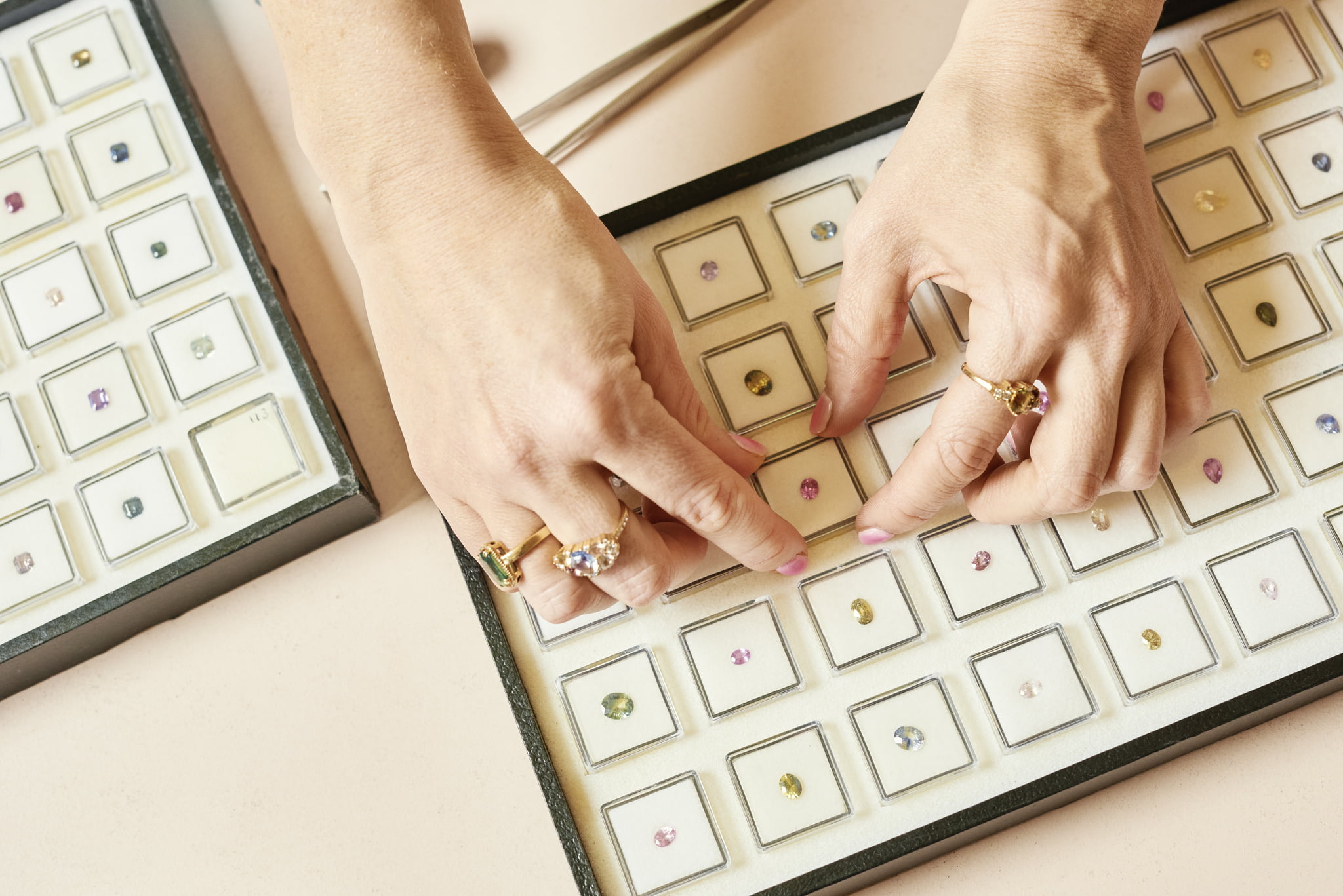
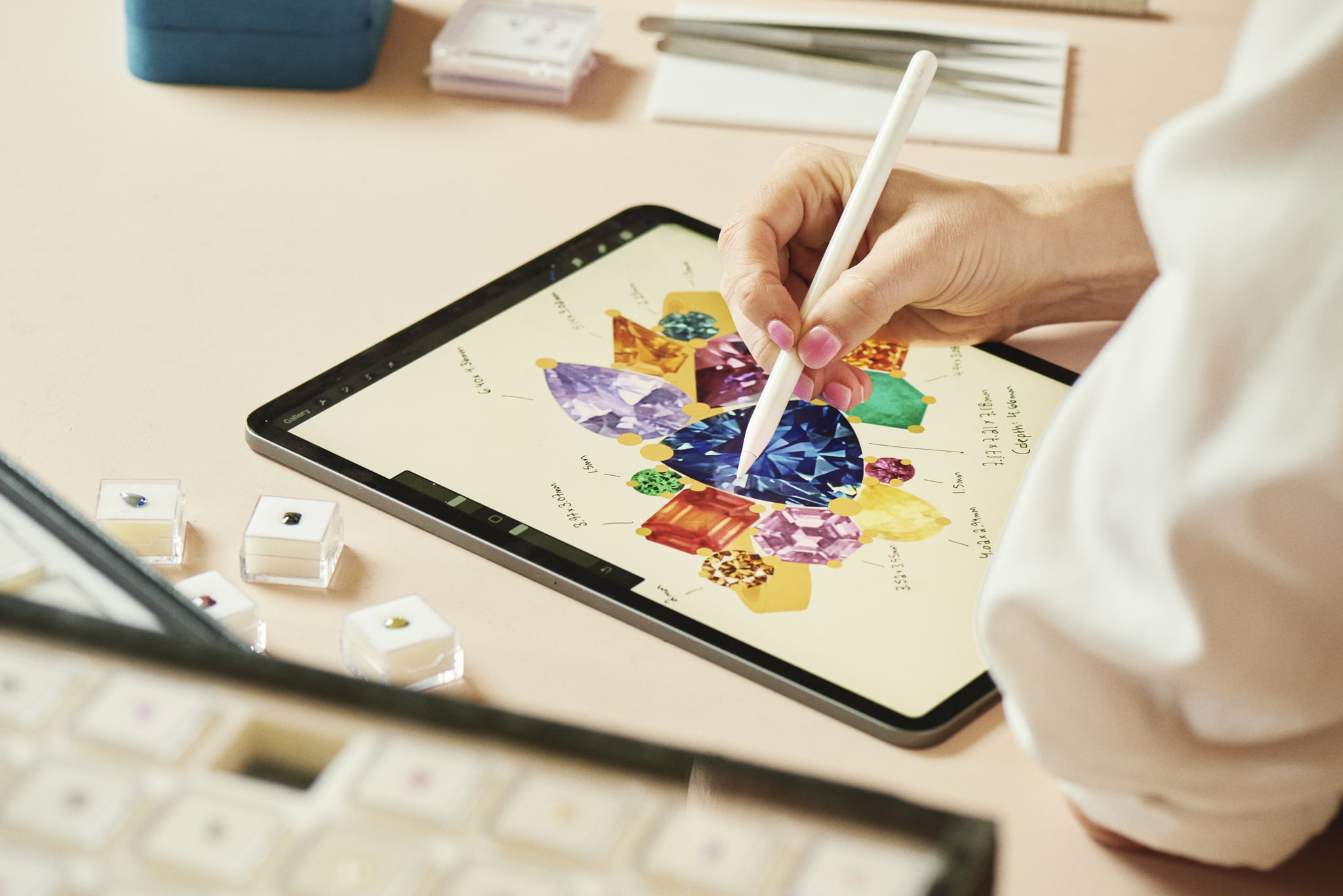
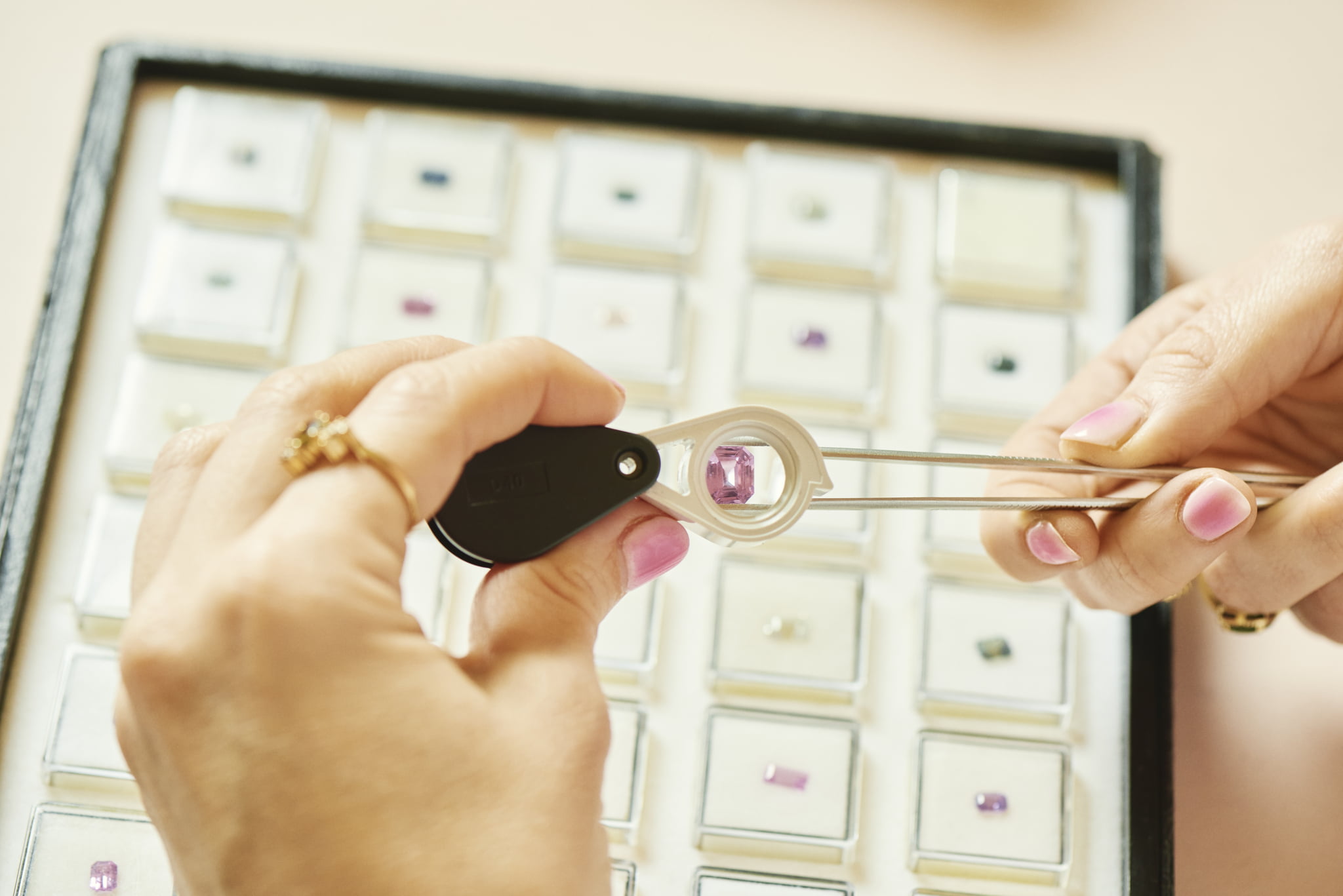
New in
Our newest colorful collection palette.
Scroll for more products
